The Canons of St. John Cantius in Chicago sent me a copy of their 2014 Ordo for use with the Extraordinary Form of the Roman Rite.
Every sacristy needs to have an Ordo for both forms of the Roman Rite!
An Ordo is a booklet which tells you, day by day, what Mass and what office to say and some of the particulars of how to say it.
I reviewed the FSSP Ordo HERE.
First, the Cantian Ordo is far more attractive than the FSSP Ordo (which is quite plain). The color will also help you locate it more quickly.
Rather than describe the content, here are the table content pages. Click to see them in a larger format:
There is just a little artwork… just a little. There is none in the FSSP version.
Here is a shot of the actual calendar section, as it begins with Advent. It is not much different from what the FSSP does.

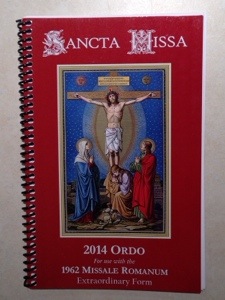
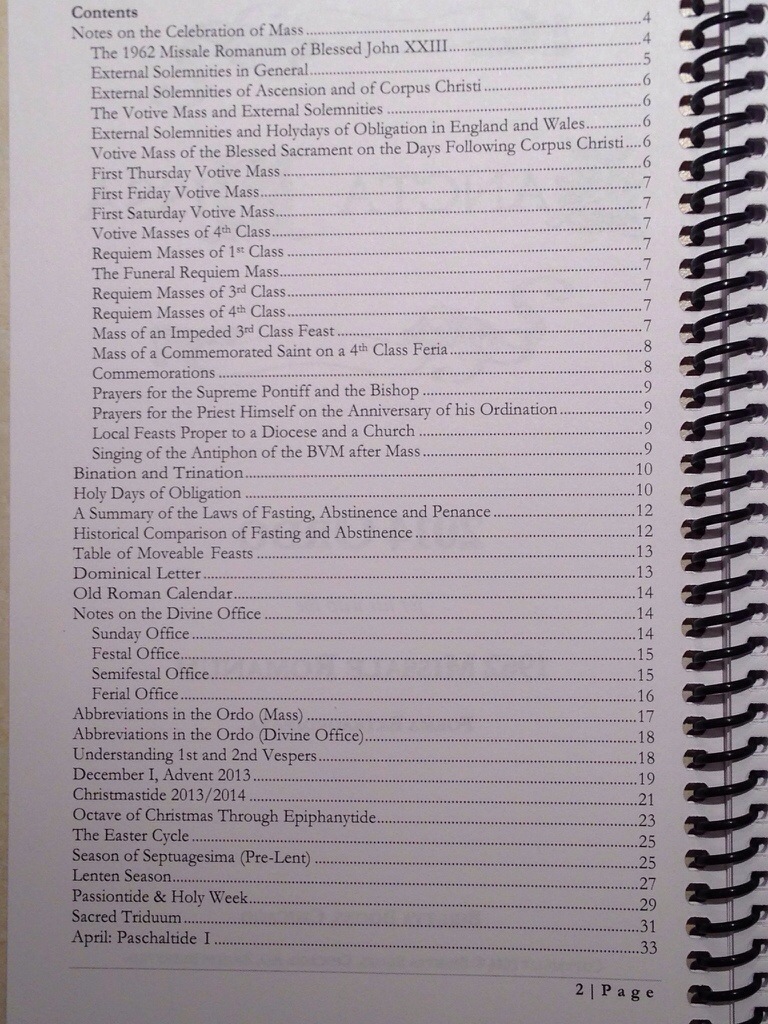
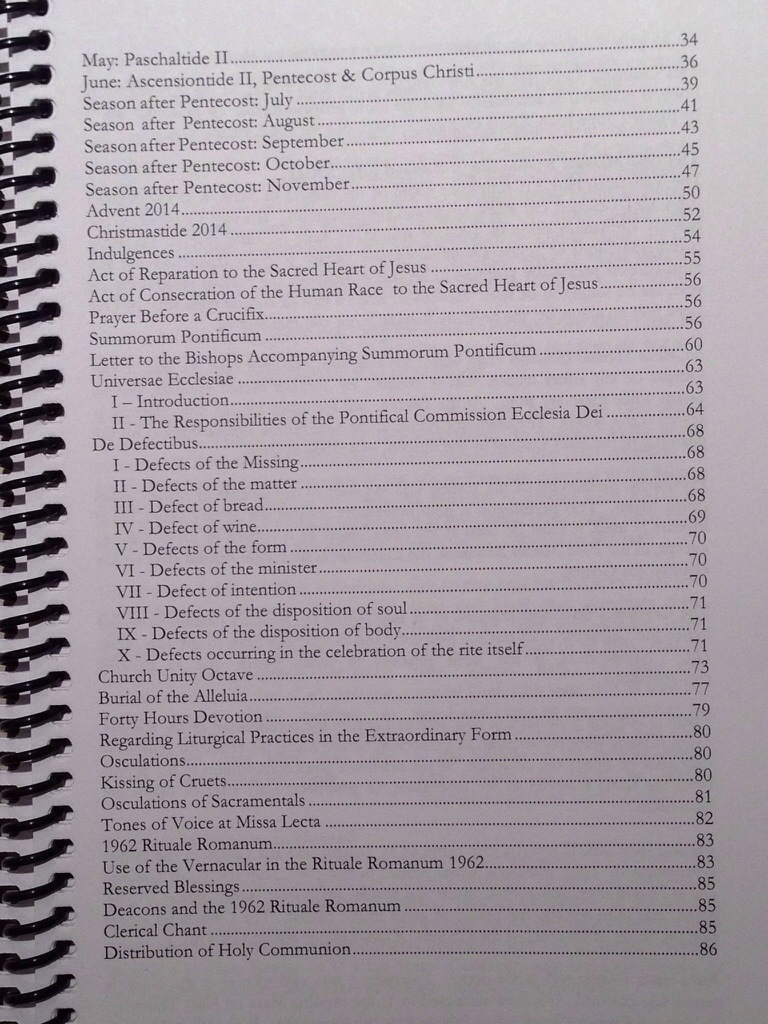
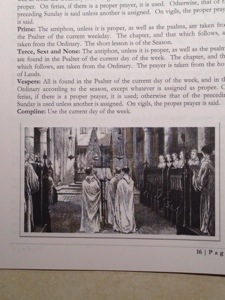
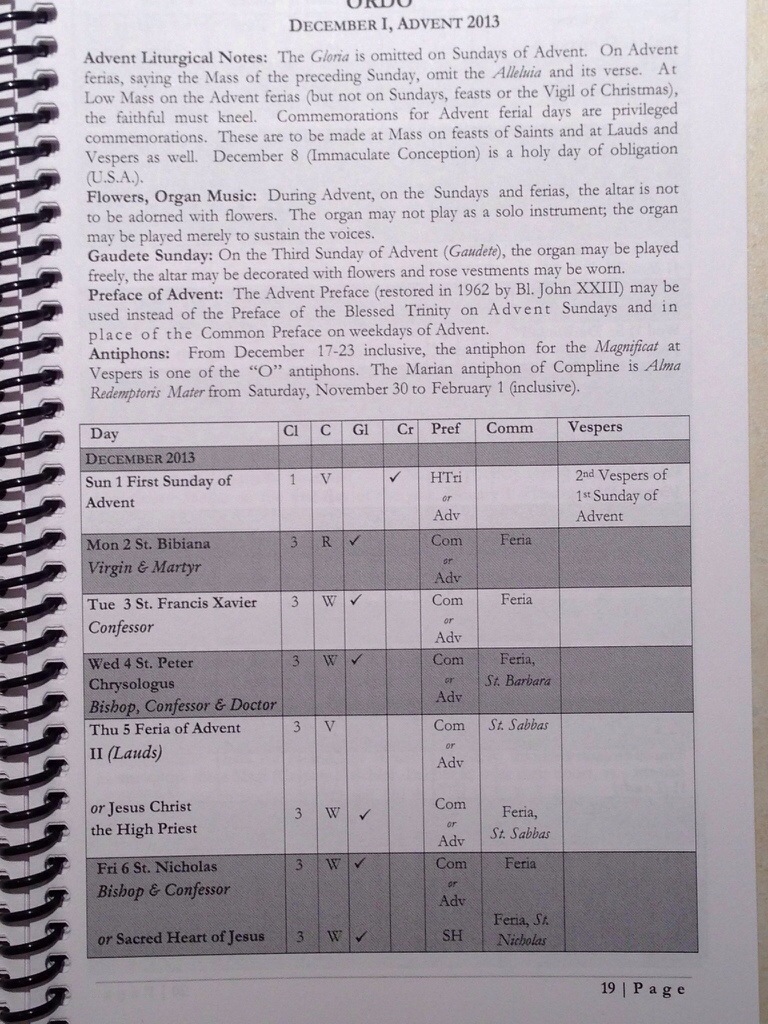

































This is the first year we considered this edition vs. FSSP for the religious order I help. For us, time was the deal killer. We ordered 11 ordos. Some of them headed to South America earlier this week in someone’s luggage. FSSP’s was ready a couple of weeks ago; this one wasn’t. It’s too bad.
The Society of St. John Cantius, from the beginning, seems to have focused on a spirituality of liturgy, not just the EF, but the OF and even the Eastern Rites. In light of Summorum Pontificum, they seemed to expand this to education. So, the ordo for them was probably more about education, whereas the ordo for the FSSP, was probably intended more for parish use of the FSSP members themselves — less wider education. (Yes, I will note that FSSP has also focused on education much more after Summorum Pontificum — bu they had been producing this ordo internally for years.)
Is there an ordo for the NO? Is there any reason a layman should have one? I want to begin reciting the office so I am curious if it would help.
Ryan,
There are ordos for the ordinary form and its calendar. In the United States several editions are published depending on which diocese you live in (they are grouped into regions of several diocese to economize on printing). Paulist Press publishes them and a smartphone app version.
The ordo does include information for the office and the mass, but an easier resource to start reciting the ordinary form Liturgy of the Hours would be the St Joseph Guide to the Liturgy of the Hours, a small booklet that tells you the page numbers you need each day that can often be carried inside the cover of the Breviary. The only times the ordo would be more helpful would be when there is a local diocesan solemnity or feast that is not part of the general or national calendars. If you have not yet bought the books, there are a couple of decent free or low fee web tools to get started with, including divineoffice.org which includes the page numbers for the books as well as the actual text of the office for the present day.
I am perhaps one of the few priests who lives in a parish that does both forms (almost) every day. I am waiting for some bright youngun to come up with an Ordo that has both forms for each day. And/or one that compares the 1962 rubric days with the pre-1962 ones, too… like the St Lawrence Ordo I also buy every year…
Seems like a spiral bound that lays open with facing pages for each form/calendar would be ideal for a parish that takes the both/and approach to liturgical forms.